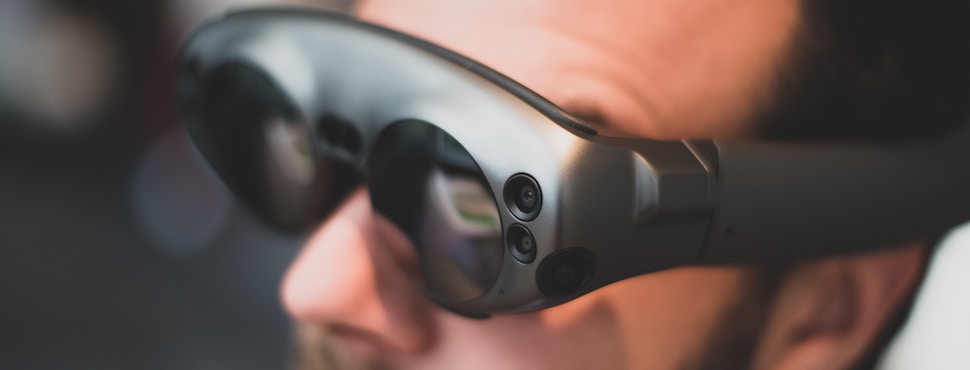How many times have you walked to work and had to pull out your phone to check
train times, or been mid-conversation with a friend and gone to look up restaurant
options for a brunch you’re planning? Or have you been in a business meeting using
the latest virtual tool to include Bob from Ohio and Paula in Beijing, but when it
comes to discussing your latest project, that flat digital presentation just doesn’t get
the message across?
I believe that over the next 10 years, we’ll see significant changes in the Mixed
Reality (MR) landscape, making our digital lives more accessible and intertwined.
Imagine a portal for MR content linked directly to your glasses or lenses, where you’ll
be able to find everything you need and information within your field of vision.
Where virtual reality (VR) provides a user (usually via a headset like Facebook’s
Oculus) with an artificial, computer generated simulation or recreation of a real life
environment, augmented reality (AR) layers computer-generated enhancements on
top of existing reality, giving users a more meaningful experience via its interaction.
AR is developed into apps and used on mobile devices to blend digital components
into the real world so as to enhance one another.
MR combines the best of both virtual and augmented reality, and covers all possible
variations of real and virtual objects, from the natural world, where nothing is
computer generated, to the virtual environment, where everything is. Right now,
smart glasses such as Microsoft’s HoloLens are pretty clunky, but they act as a self-
contained computer headset that can be used for remote support.
Imagine, for example, that you can integrate this tool into customer service support
where a customer can wear a HoloLens and engineers dial in remotely to see what a
customer sees to remote fix issues there and then. It’s got huge potential for time
and cost savings for companies. This kind of device can open up a whole new way
of running businesses, with virtual communication and collaboration.
In a decade’s time I believe MR will be condensed into eyewear, be it glasses or
lenses, acting as a portal where you can push information through. Just think, you’re
on holiday in Venice and your glasses know this. You look at a piece of architecture
and up pops a snippet of historical information, you see the gondolas and up comes
a timetable and costs, or it’s 1pm and your glasses know you usually have lunch at
this time and that you’re following a Veggie diet, so directs you to the nearest café.
No holding a device, no tapping in to search, just intelligent and intuitive digitally
layered information.
With this kind of device, supplying this information, there will be so many applications that can help feed in ads, brands can seed in marketing content, the opportunities will be endless and, if done right, create strong engagement with their customers. This is the important point, as the personal nature and proximity of MR means that anything deemed too intrusive will lose that connection.
Understanding how to use MR and engage in the right way is a must.
MR isn’t confined to your vision either. Encompassing audio tools such as voice
search is fast becoming a channel that brands can utilise successfully in their digital
strategy. We’ve seen this in action with several high level retailers in the US who are
starting to provide Alexa Skills to enhance the home shopping experience away from
their website.
The practical uses for MR go far beyond what is obvious on the surface and offer
blended engagement opportunities which merge the on and offline worlds, a
transformation challenge that a lot of companies encounter. Where there are still
boundaries with both AR and VR, MR brings together the best of both worlds – it’s
the perfect combination of digital life and the real world.
By Kelly Allison, Founder and Managing Director, KVA
Originally published VR360 | 29 May 2019
Photo by Bram Van Oost on Unsplash

